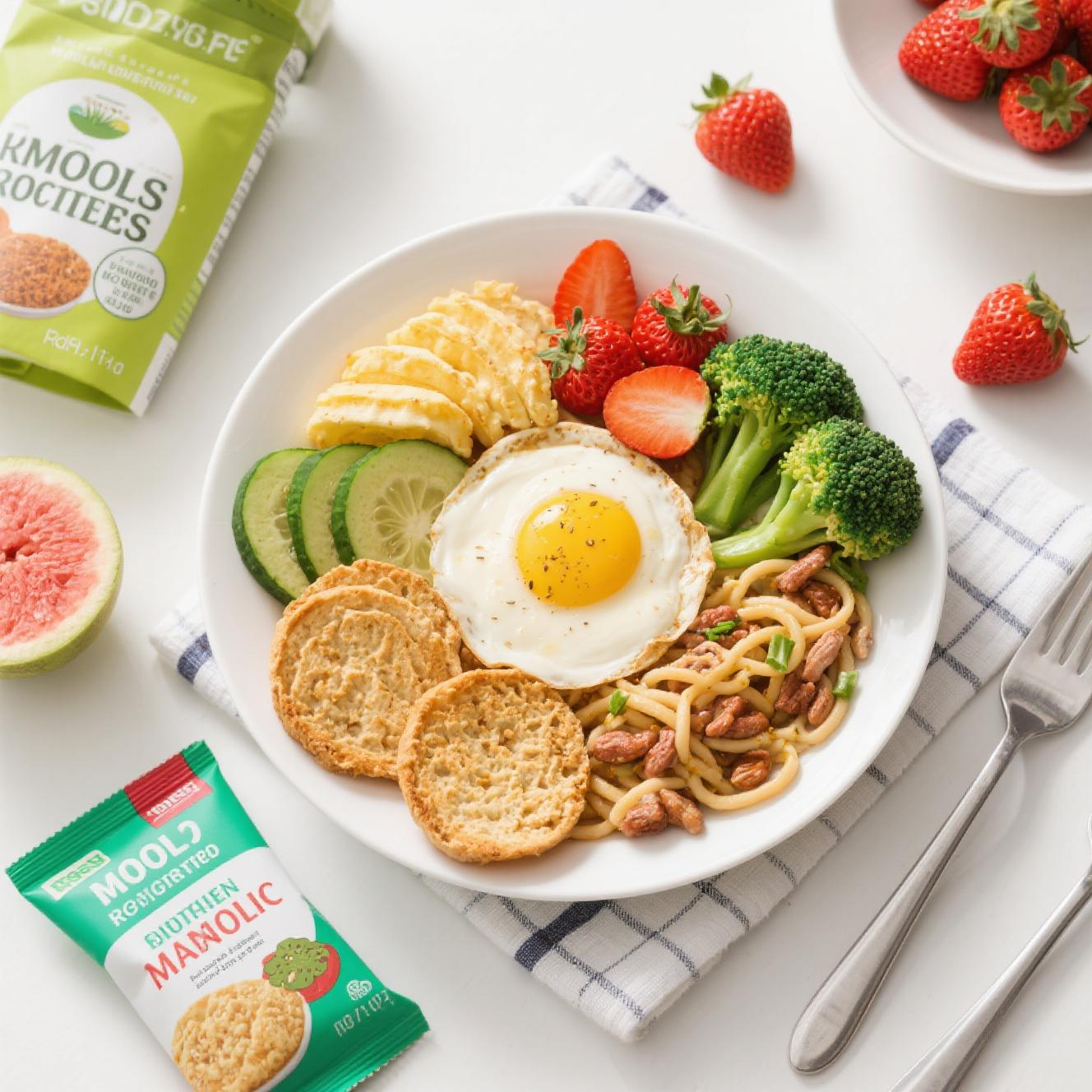It often starts with excitement. A fresh journal, a fridge full of greens, a playlist titled “Summer Shred,” and that first deep breath before diving into another attempt at losing fat. But somewhere between the second salad and the third missed social event, something shifts. The results stall, the cravings return, and the mirror doesn’t seem to reflect all the effort. For many women, fat loss feels like a maze of conflicting advice, impossible expectations, and routines that simply don’t fit real life.
Lisa, a 36-year-old HR manager and mom of two, found herself stuck in this exact spiral. She was waking up early to run, skipping breakfast, cutting carbs, tracking calories down to the gram, and still watching the scale bounce like it had a mind of its own. “I felt like I was doing everything right,” she said, “but my body didn’t agree.” Her experience isn’t rare. In fact, it’s one of the most common patterns among women trying to shed body fat. The issue isn’t a lack of discipline or motivation—it’s often misinformation, outdated diet culture, and plans that ignore the complexity of women’s physiology.
One of the most common missteps is undereating. It seems logical—eat less to weigh less—but chronic calorie restriction can backfire. When the body senses ongoing scarcity, it adjusts by slowing down metabolism, conserving fat, and increasing hunger hormones like ghrelin. The result is constant fatigue, hair thinning, and an overwhelming urge to binge by week three. Laura, a fitness coach, often sees clients eating less than 1,200 calories a day, thinking it’s the golden rule for weight loss. “They come to me wondering why their progress has stalled,” she says, “but they’re eating less than a toddler.” Sustainable fat loss requires nourishment, not starvation.
Another pitfall is an overreliance on cardio. It’s tempting—sweating it out on a treadmill feels productive, and those calorie burn numbers are validating. But relying solely on long cardio sessions without incorporating strength training can lead to muscle loss, especially as women age. Muscle isn’t just for aesthetics—it’s essential for a healthy metabolism. More lean muscle means more calories burned at rest, improved insulin sensitivity, and better hormonal balance. Yet many women shy away from weights, afraid of “bulking up.” The truth is, muscle building takes time, and for women with estrogen-dominant systems, it’s far more likely to create a toned, lean look than anything bulky.
Then there’s the obsession with scale weight. It’s one of the least reliable indicators of fat loss, especially for women whose weight can fluctuate dramatically due to menstrual cycles, hydration, sodium, and muscle repair. Dana, a 42-year-old who started weightlifting for the first time, was crushed when the scale went up three pounds in two weeks. But her measurements had gone down, and her jeans fit better. “I almost gave up,” she admitted, “until I realized fat loss isn’t always linear—or visible on the scale.” Focusing on body composition, strength, sleep quality, and energy levels offers a more realistic and empowering measure of progress.
Diet fads don’t help either. From low-carb to low-fat to juice cleanses, many trendy diets oversimplify complex metabolic processes. Women’s bodies, particularly during childbearing years or perimenopause, are highly sensitive to stress—including the stress of extreme diets. Cortisol, the body’s stress hormone, can spike in response to drastic changes in eating patterns, leading to increased abdominal fat and stalled results. What works for a 25-year-old male influencer on TikTok may not apply to a 40-year-old woman juggling work, hormones, and three school drop-offs before 9 a.m.
Intermittent fasting, for example, is a powerful tool for fat loss—but it isn’t one-size-fits-all. While some women thrive with time-restricted eating, others experience disrupted sleep, mood swings, or worsened PMS. The difference often lies in stress levels, activity levels, and individual insulin sensitivity. Julia, a yoga instructor, started skipping breakfast after reading about 16:8 fasting. At first, she felt lighter and more focused. But after a month, she was experiencing irregular periods and extreme afternoon crashes. Her body needed a different rhythm—one that supported her hormones instead of suppressing them.
Low-carb and ketogenic diets can also be a double-edged sword. Reducing carbohydrates often leads to rapid water weight loss, which feels great initially. But women with thyroid imbalances or high physical activity levels might notice a plateau or even weight gain later. That’s because carbohydrates play a role in hormone production and muscle repair. Removing them entirely, especially healthy complex carbs like sweet potatoes, legumes, and whole grains, can disrupt energy and even menstrual cycles.
Then there’s the sugar trap. While avoiding added sugar is a smart move, many women replace it with “sugar-free” or “fat-free” snacks filled with artificial sweeteners and preservatives. These ingredients can wreak havoc on gut health, disrupt hunger cues, and in some cases, lead to increased cravings. Rachel, a self-proclaimed “snackaholic,” swapped her chocolate habit for diet protein bars marketed as low-carb. She noticed her bloating got worse and her sugar cravings didn’t budge. After working with a nutritionist, she switched to small portions of real, dark chocolate paired with fruit or Greek yogurt. Not only did her digestion improve, but the cravings finally quieted.
The emotional side of dieting also deserves attention. Many women tie their self-worth to their ability to “stick to the plan,” leading to guilt and shame when things go off track. A night out with friends turns into a week of self-punishment. But fat loss isn’t about perfection—it’s about patterns. One meal, one missed workout, or one piece of cake doesn’t undo progress. In fact, flexibility can be the secret ingredient to long-term success. When eating patterns allow for joy, celebration, and spontaneous moments, they’re more likely to last.
Meal timing also plays a crucial role. Eating too little during the day, then overeating at night, is a familiar cycle. Skipping meals in the name of “discipline” can result in ravenous hunger later, when willpower is lowest. Balanced meals throughout the day—rich in protein, healthy fats, fiber, and complex carbs—support stable blood sugar and reduce binge eating. For some, it’s as simple as making sure lunch isn’t just a protein bar at their desk, but a full plate with grilled chicken, quinoa, and sautéed vegetables.
Hydration often goes unnoticed too. Mild dehydration can mimic hunger and lead to unnecessary snacking. Water supports digestion, metabolism, and even energy production. Jenna, who started carrying a reusable water bottle everywhere, said it was the easiest change she ever made—and one of the most effective. With better hydration, her cravings dropped and her afternoon headaches disappeared.
Sleep may be the most underestimated factor in fat loss. A lack of sleep increases cortisol and disrupts ghrelin and leptin, the hormones responsible for hunger and satiety. Women who sleep less than six hours a night are significantly more likely to struggle with fat loss, no matter how well they eat. Creating a nighttime routine, reducing blue light exposure, and keeping consistent sleep and wake times can dramatically improve results.

And finally, one of the biggest shifts women can make is redefining success. Instead of chasing thinness or a number on the scale, focusing on strength, vitality, and confidence offers a more holistic and fulfilling path. Vanessa, a former chronic dieter, started weight training at age 45. She now talks more about how much she can deadlift than how much she weighs. “I’m not smaller,” she says. “I’m stronger. I feel powerful. That means more to me than being a size four.”
Fat loss isn’t about rules—it’s about rhythm. And for women especially, finding that rhythm requires patience, curiosity, and compassion. With the right knowledge, the right tools, and a little bit of grace, the journey becomes less about restriction and more about empowerment. And somewhere along the way, those stubborn pounds begin to shift—not because you fought your body, but because you finally started working with it.



